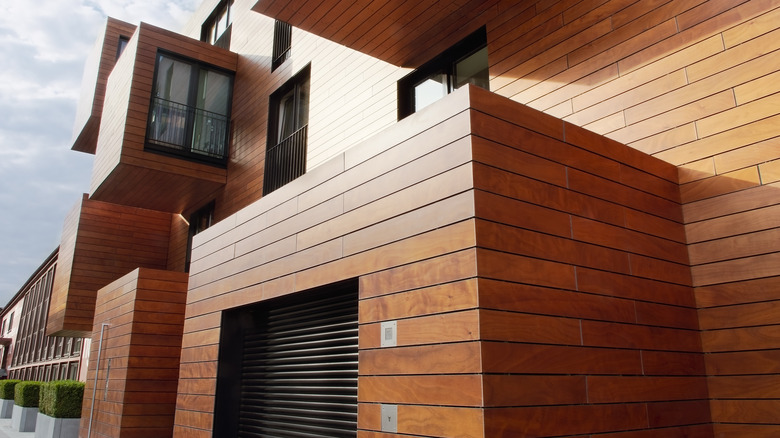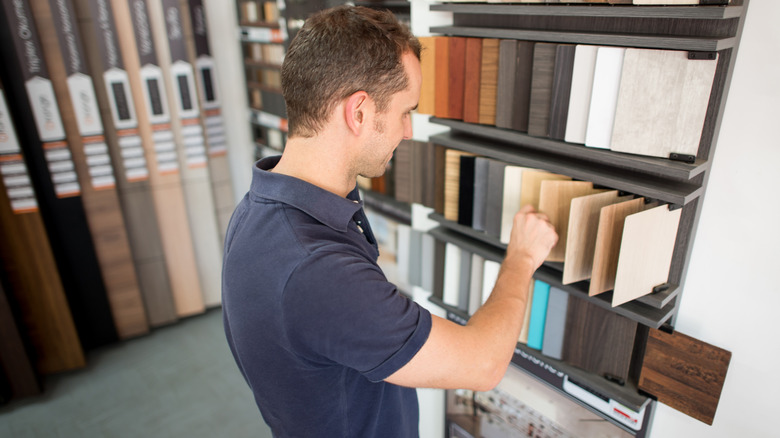Everything You Should Know Before Installing Wood Siding On Your House
It happens: You go over to your new neighbor's house to extend your welcome and come out loving their wood siding. But before you commission a full-blown remodeling, it's important to know certain things about installing wood siding. Now, you might think that you know all about wood's timeless elegance and classic charm. You might also be familiar with how it insulates your home against changes in temperature, saves energy costs, and absorbs outside noise. Its eco-friendly nature doesn't hurt, either. However, that's not all there is to this siding material. For starters, wood is more expensive than other types of house siding, like vinyl.
Wood also requires regular maintenance and upkeep. A few types must be resealed and stained (or painted) every two to three years to protect them from moisture damage and keep their structural integrity intact. Some kinds, like pine, even require staining once or twice yearly. This will cost you both time and money. The good news is the regularity of the staining will depend on the type of wood you go for, climatic conditions, and installation. Additionally, you'll have to hire professionals for adequate wood siding installation. It's important to note that wood isn't a good siding option if you experience inclement weather for the better part of the year.
Cost and durability
As mentioned, the material cost for wood siding is higher than its contemporaries. Expect to pay between $1 and $5 per square foot (via Angi). However, your chosen wood type might drive the average cost higher. For instance, low-grade wood will cost $1 to $3 per square foot, whereas mid-grade will cost $2 to $12 per square foot. Alternatively, if you go for premium-grade hardwoods, the pocket pinch will be between $3 and $30 per square foot. If you opt for low-grade to save some money, you'll have to pay more later since it's more likely to warp and swell. So, if you want your siding to last, you have no option but to choose high-quality wood. Moreover, you'll have to bear at least $2 to $5 per square foot as labor costs. You can go the DIY route, especially if you have prior experience, but keep in mind that mistakes can be costly.
Generally, wood siding is incredibly durable and can last anywhere between 10 and 40 years, but to ensure your hefty investment doesn't go to waste, you'll have to maintain it proactively. Slacking on maintenance can cause the material to warp or, in extreme cases, lead to wood rot. In both these instances, moisture will seep beneath the siding and make its way inside, inviting issues like mold. It must also be professionally cleaned yearly. An annual pest inspection is also necessary to keep wood-boring insects, like termites, from causing irreparable damage.

